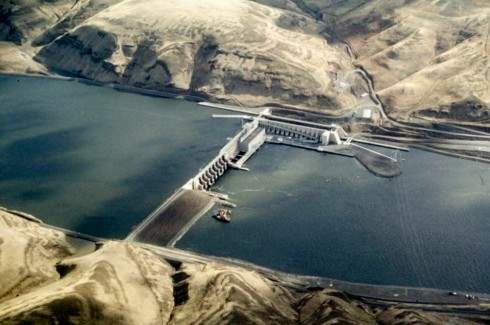forum
library
tutorial
contact

Dam Breaching
Would Hurt Idaho's Farmers
by Sen. Carl Crabtree
Idaho Mountain Express, June 15, 2022
|
the film forum library tutorial contact |

|
Dam Breaching
by Sen. Carl Crabtree
|
I've been fighting for this my whole life,
and I plan to keep on fighting.
 Agriculture is the backbone of Idaho. The agricultural industry is one of the largest contributors to the state's economy, and our farmers' crops feed people all over the world. A big reason why this is possible is thanks to the dams along the Snake River.
Agriculture is the backbone of Idaho. The agricultural industry is one of the largest contributors to the state's economy, and our farmers' crops feed people all over the world. A big reason why this is possible is thanks to the dams along the Snake River.
Now, the state of Washington's democratic Gov. Jay Inslee and U.S. Sen. Patty Murray are advocating for the removal of the four dams along the lower Snake River. In a recently published report, they say breaching the dams is the only way to save the endangered salmon species. But what they fail to mention is the damaging impacts the dam breach would have on Idaho's agricultural communities.
I've been fighting for this my whole life, and I plan to keep on fighting. We need to keep the lower Snake River dams.
Along the Snake River is Idaho's only seaport: the port of Lewiston. Surrounding this port is a majority of Idaho's farmland. Our farmers currently utilize barges on the river system to affordably transport their crops. According to the Columbia River System Operations Environmental Impact Statement, 10% of the world's wheat exports move through this river system. It is the top wheat export gateway in the nation and the third largest grain export corridor in the world. The four dams on the lower Snake River are crucial for Idaho farmers to get their crops to market and for our state's economy.
Removing the dams would mean a large increase in transportation costs because it would eliminate barge transportation. In 2018, 87% of the downward tonnage on the lower Snake River was from wheat. Federal studies estimate average transportation costs would go up by 10 to 33%.
Our farmers would have to find ways to cover those costs. People would lose their jobs. And our agricultural output would go down significantly. It would be left to the farmers to eat into their own pockets to cover these new costs. But it is more likely consumers would be the ones footing the bill.
Speaking of consumers, energy costs would also go up. The Columbia River System Operations Environmental Impact Statement says five counties in Idaho will be directly affected, and the majority of Idahoans around the Lewiston port live in rural communities. It is not feasible for those families to try to shoulder a 25% increase to their energy bill, especially as the U.S. deals with record high inflation numbers.
Not only would costs go up, the sheer amount of farmable land would decrease as well if the dams were breached. Right now, 48,000 acres of farmland rely on these dams for irrigation. Breaching them would mean a loss in food production for our region. An entirely new irrigation system would need to be reimagined and built. And once again, costs for everyday items would go up.
All these effects are real and extremely likely outcomes if the four lower Snake River dams are breached.
The revival of the endangered salmon population is very important. But it is an undertaking that needs more planning. The Inslee/Murray report offers no guarantee that salmon numbers will go up if the dams were gone.
Taking out a vital component of Idaho's transportation system, that small farmers rely on, would mean the people of Idaho would be directly impacted. Energy, food, and road repair costs would go up. Farmers would have to make serious changes to their operations, which could take years.
We need to keep the lower Snake River dams. We might not notice the dams are here today, but we will notice if they're gone.
Related Pages:
Restoring the Snake River Would Give Us Pride and Joy by David Cannamela, Idaho Mountain Express, 3/23/22
learn more on topics covered in the film
see the video
read the script
learn the songs
discussion forum
